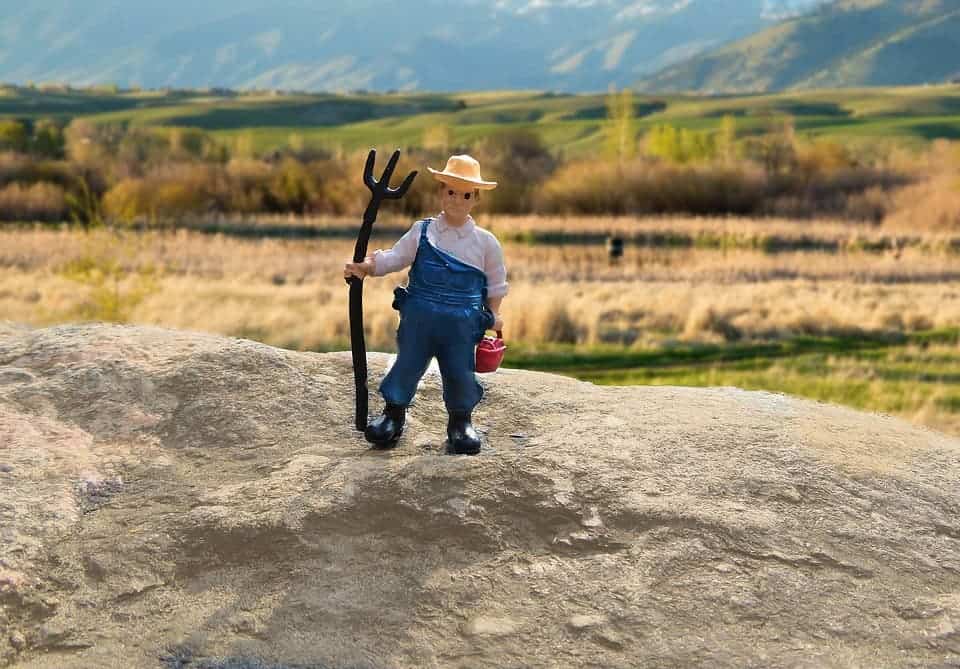Early farmers didn’t move in and replace hunter-gatherers from the get-go, new research has found. Instead, the two coexisted and interacted for some time after early farmers spread across Europe.

The agricultural revolution is one of the most hotly debated turning points in human history. In Europe, the shift from foraging and hunting to a more sedentary, farming lifestyle started around 10.000 years ago. It would culminate in farmers largely replacing pre-existing hunter-gatherer communities.
‘How do you do’ or ‘I’m gonna stab you’?
Previous studies of ancient DNA have shown that the agricultural revolution in Europe wasn’t based on a flow of ideas. Rather, the spread of farming throughout the continent was owed to farmer populations from the Near East expanding into the continent and bringing the practice along with them. Finding a single point of origin for early farming populations throughout Europe was an unexpected discovery, given how diverse prehistoric cultures were in this area.
However, the intricacies of this process are still poorly understood. For example, we don’t really know if it was a peaceful transition, one done at scythe-point, or one aided by disease. In other words, whether newly-arrived farmers would displace the people already living in Europe through war and disease, or they simply co-existed with and out-competed them over time.
The current study suggests it was likely the latter. It found that these two groups likely lived side-by-side following farmers’ migration into Europe. Later, they would start slowly integrating local hunter-gatherers into their communities, a process that seems to have increased in speed and scope as time went on.
The authors from Harvard Medical School, the Hungarian Academy of Sciences, and the Max Planck Institute for the Science of Human History say that these early farming communities also exhibited various levels of hunter-gatherer ancestry. The current paper focused on this element, and the wider framework of interactions between early farmers and preexisting hunter-gatherer groups in three locations: the Iberian Peninsula (today’s Spain and Portugal), the Middle-Elbe-Saale region in north-central Europe, and the Carpathian Basin (largely overlapping today’s Hungary and western Romania).
The team drew on high-resolution genotyping techniques to analyze the genomes of 180 early farmers, 130 of whom are newly reported in this study. The individuals lived from around 6000 BC to 2200 BC.
“We find that the hunter-gatherer admixture varied locally but more importantly differed widely between the three main regions,” says Mark Lipson, a researcher in the Department of Genetics at Harvard Medical School and co-first author of the paper. “This means that local hunter-gatherers were slowly but steadily integrated into early farming communities.”
The share of hunter-gatherer genes in these communities’ genome never reached high levels, but it did increase over time. This suggests that hunter-gatherers weren’t pushed out by the encroaching farmers — rather, the two groups lived side-by-side, developing deeper ties and interacting more frequently over time.
Local interactions
Furthermore, the team reports that farmers in each location only mingled with hunter-gatherers from the same area. This suggests that once they remained largely sedentary after settling an area, thus limiting their interaction with farming or hunter-gatherer communities farther away.
This allowed the researchers to differentiate groups of early European farmers by their “specific local hunter-gatherer signature,” says co-first author Anna Szécsényi-Nagy of the Hungarian Academy of Sciences, adding that it’s the first time anyone has been able to do so. Farmers in Spain, she explains, “share hunter-gatherer ancestry with a pre-agricultural individual from La Braña, Spain.” Those in central Europe are more closely tied to groups such as hunter-gatherers from the Loschbour area, Luxembourg, and those in the Carpathian basin share ties with local groups in their area.
Using statistical models to track the origin of DNA blocks inherited by 90 individuals from the Carpathian Basin who lived in roughly the same period, the team also produced a rough estimate of how the populations mixed. The results indicate an ongoing process, starting off small and picking up in speed and intensity over time.
“We found that the most probable scenario is an initial, small-scale, admixture pulse between the two populations that was followed by continuous gene flow over many centuries,” says senior lead author David Reich, professor of Genetics at Harvard Medical School.
The team believes that thorough, detailed databases similar to the one used in their study could help reveal new information about how and when peoples in other areas of the world mixed and evolved.
The paper “Parallel palaeogenomic transects reveal complex genetic history of early European farmers” has been published in the journal Nature.






